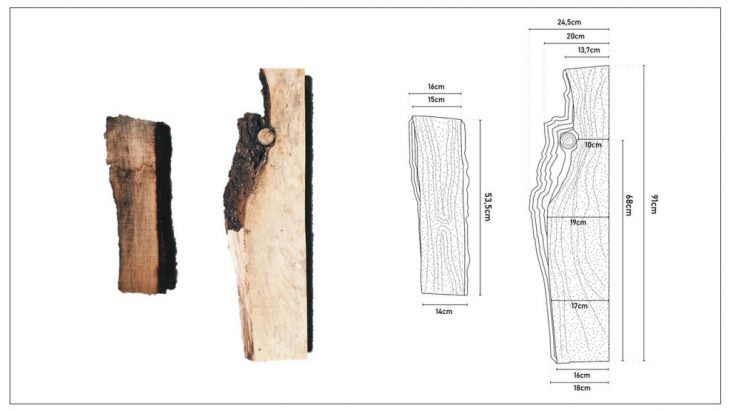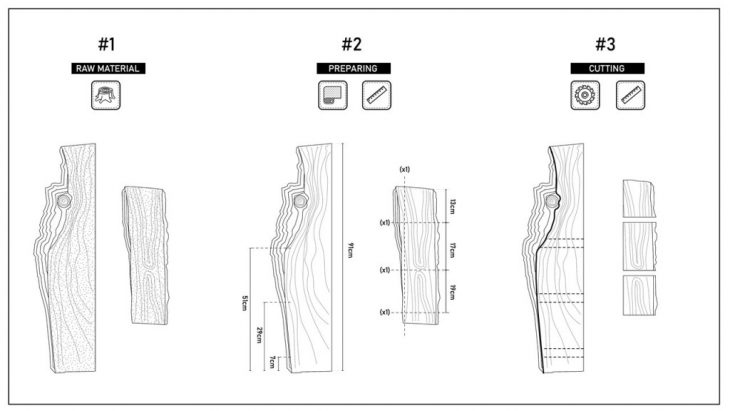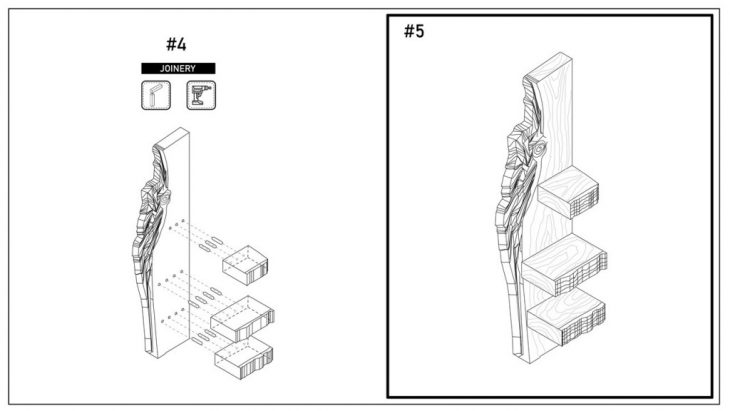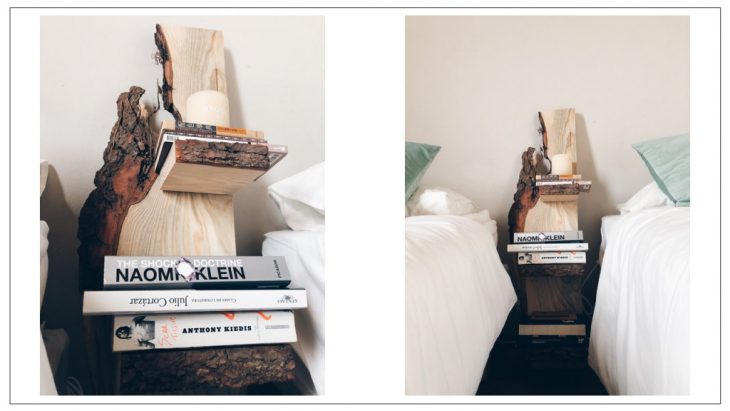IDEA
To learn and apply fabrication techniques, students formed groups to create their own furniture. Irene and I are roommates, so we decided to form a group. One of the things we have in common is that we both enjoy reading, which is why we decided to upgrade our nightstand to have shelves. As we selected the pieces of wood available, we realized that the pieces we thought were more special, were those that maintained their raw shape. We therefore decided to follow that idea, understanding that trees start from a common trunk and separate into different branches, which even if they are not symmetrical, they are balanced.

DESIGN
The first attempt of our design was made using scrap pieces of previous projects. They were organically shaped, which made them even more beautiful. We modelled them on Rhino and designed various options. However, we then realized that these pieces were too fragile, and we were not able to use dowels for our joinery. Therefore, we looked for other pieces that would follow the initial concept, but that were more feasible for proper construction. We modelled these new pieces in Rhino and decided on our final design. Having started with 18 pieces, we simplified our design to use only two pieces of wood.


CONSTRUCTION
We first planed our wood, which resulted in losing a knot in the main piece that we wanted to preserve. We then measured, cut, and sanded the pieces before drilling. Next, we assembled the shelves with wooden dowels. While placing the shelves, we realized that we had not drilled deep enough for the dowels to fit, which left us with a floating shelf. That had not been our initial intention, but we enjoyed the effect it created, so we proceeded to install the next two shelves the same way.
FINAL PRODUCT
Through this project we learned how to use carpentry tools and how to accurately model organic shapes on Rhino, all while building a piece of furniture for our new room.
Fabrication Techniques: Nightstand is a project of IaaC, Institute for Advanced Architecture of Catalonia developed at Masters in Advanced Ecological Buildings in 2019/2020 by:
Students: Irene Rodríguez & Camille Garnier
Faculty: Marziah Zad, Michael Salka, & Jonathan Minchin
